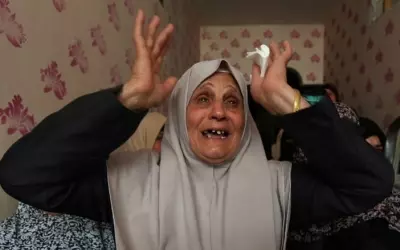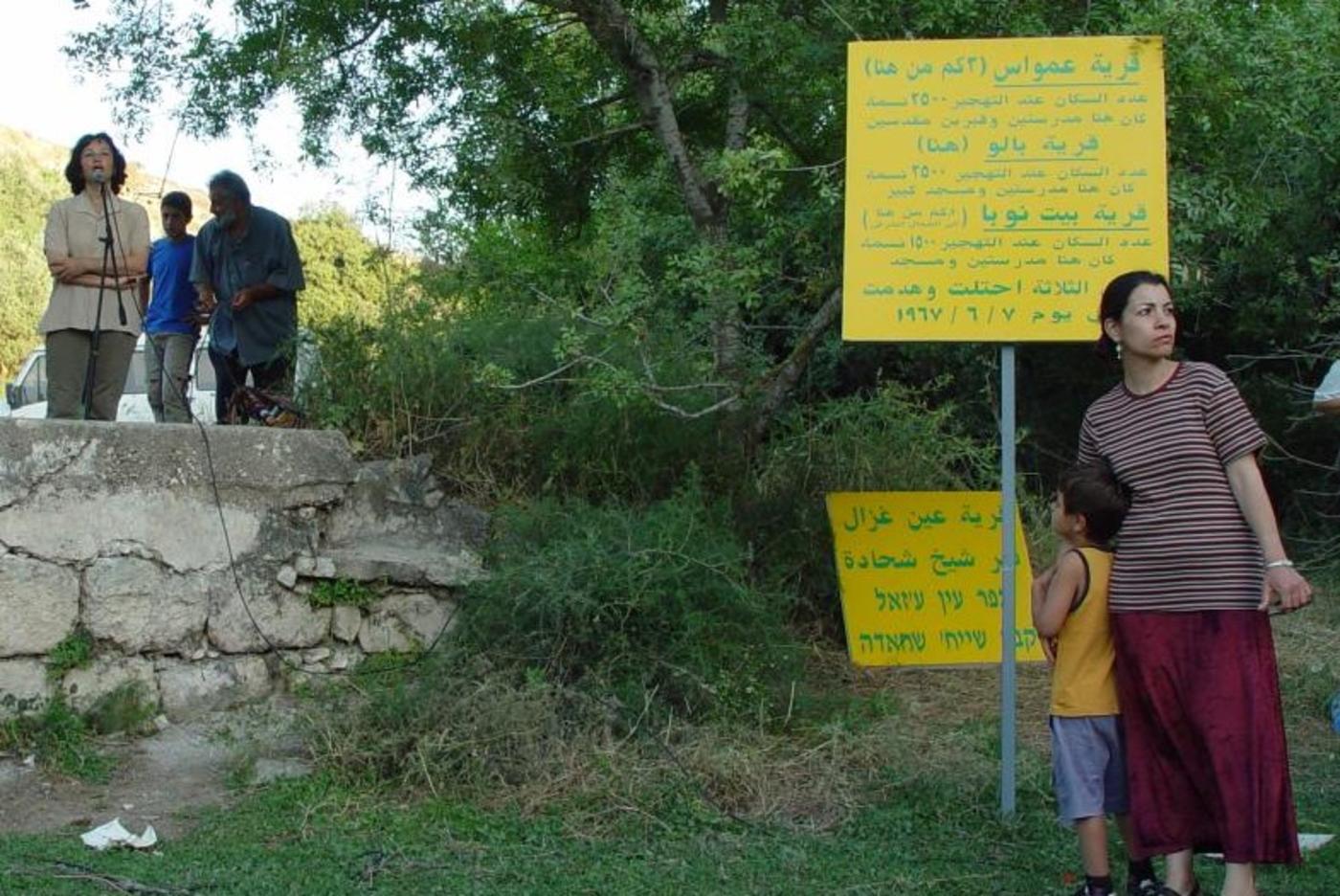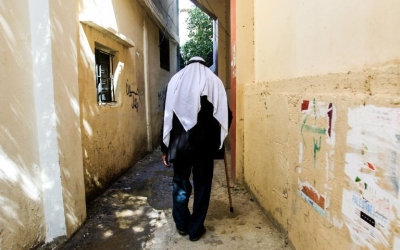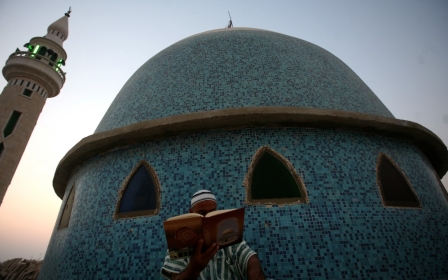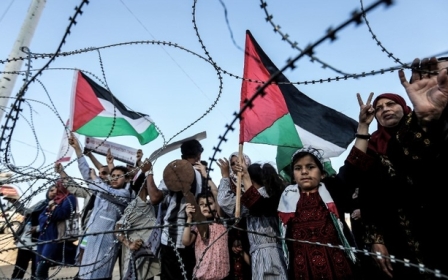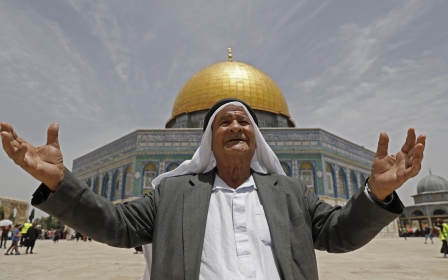My Yalu story: One day, exiles will return to the village Israel destroyed
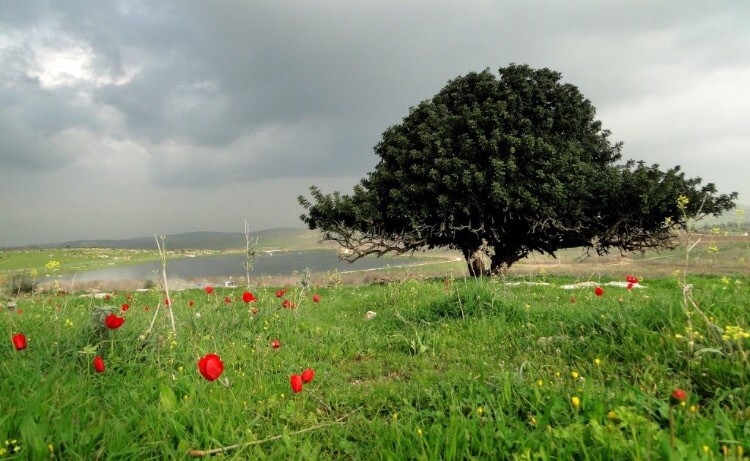
There was an unexpected knock on the door of my grandfather’s home in Amman at around 11pm, as I was packing my bags ahead of a flight back to Chicago the next day.
A neighbour and member of the Yalu community association had come to deliver a book. Having heard that my grandfather, known throughout the Palestinian village as Abu Hussein, had a granddaughter visiting from the US who wanted to learn more about Yalu's past, he insisted that I have a copy of this book before my departure.
I was moved by this man’s generosity and by this text, which holds a great deal of sentimental and political significance to my family and to the people of Yalu. The book in question was Ribhi Alayan’s So That We Do Not Forget: Yalu, the Destroyed Palestinian Village.
Today, more than five decades later, amid a conversation on the destruction of Palestinian villages and loss of life, my grandfather still smiles when he recalls the beauty of Yalu
In 1967, Israel ethnically cleansed our village, Yalu. Residents of the town comprised part of the approximately 300,000 Palestinians who were made refugees by Israel in the 1967 war, known as the Naksa or “setback” to Arabs and Palestinians. But unlike many other colonised Palestinian lands, Israel never replaced the people of Yalu with settlers. As an apparent act of revenge for local resistance in the 1948 war, Israel decided to keep the land empty, epitomising the racist logic of Zionism that views Palestinian life as a threat.
In 1975, the Canadian Jewish National Fund turned Yalu and two neighbouring villages into Canada Park, which Israel now cites as an example of its commitment to environmentalism. But for the Palestinians who were violently removed from the homes now buried under this park, it is a symbol of the destruction of Palestinian trees, crops, homes and lives.
New MEE newsletter: Jerusalem Dispatch
Sign up to get the latest insights and analysis on Israel-Palestine, alongside Turkey Unpacked and other MEE newsletters
Our story disproves the myths perpetuated by Israel to justify its war crimes, both past and present. It also points to the resilience and determination of exiled Palestinians to reclaim their lands and political destiny.
Bejewelled landscape
Yalu and the neighbouring villages of Imwas and Bayt Nuba were once known as the Latrun villages, located between the West Bank and the Green Line, which demarcated what became Israel after the 1948 Nakba. The Latrun villages were located near a strategic road that connected Jerusalem with the Palestinian coast.
Life in Yalu before its destruction in 1967 was dignified, but not without difficulty. My peasant family owned the land they lived on and survived off of it, sometimes travelling to larger Palestinian cities to sell their surplus produce. My great-grandfather owned an acre and a half of land on which our family planted the wheat, barley and corn that provided basic sustenance.
As in many other Palestinian villages, fruit trees bejewelled Yalu’s landscape. Family elders recall the sweetness of their homegrown figs, apricots, apples, grapes and peaches, and the abundance of olive trees. Today, more than five decades later, amid a conversation on the destruction of Palestinian villages and loss of life, my grandfather still smiles when he recalls the beauty of Yalu.
When it was time to press olives for oil, they would travel with their freshly picked olives to Beit Ur al-Tahta, a village near Ramallah, to use their olive press. In 1967, the people of Yalu did not get to make that trip. That June, Israeli soldiers forced them to march by foot to the West Bank and Jordan with nothing but the clothes on their backs, to live as refugees.
Mass resistance
“They were chained,” is how my grandfather describes the state of Palestinians two decades before the destruction of our village. British colonial authorities disarmed Palestinians in response to the 1936-39 Arab uprising, a moment of mass resistance to the collusion between British imperialism and Zionist settler-colonialism. My grandfather recalls that British police would impose an automatic six-month sentence on any person found with so much as a switchblade.
An 18-year-old orphan at the time, my grandfather recalled the mood in Yalu leading up to the 1948 Nakba as “miserable”. The Zionist militias that went on to form the core of the Israeli military attempted to seize Yalu and neighbouring villages, but residents handed the well-armed Zionist forces a rare defeat.
Peasants from the Latrun region risked their lives to obtain weapons to defend their land. Those who owned land sold parts of it to arm themselves; some women volunteered their wedding gold, selling it to help arm the local resistance. These forces from Latrun joined the battle of Bab al-Wad, and the ensuing defeat motivated Yitzhak Rabin, then the Israeli army’s chief of staff, to seek revenge in 1967.
Yalu’s resistance haunted the likes of Rabin and Moshe Dayan, then Israel’s defence minister. Rabin and Dayan issued orders to expel residents, showing that despite later Israeli claims, the ethnic cleansing of Yalu and neighbouring towns was, in fact, premeditated. Israel committed war crimes through its seizure of the land and expulsion of residents.
Residents of the villages were rounded up in an open field outside of Yalu; three died in the march. Survivors recalled the cries of children, and the extreme hunger and thirst they endured. According to Alayan, who authored the book our neighbour gave me, the three men collapsed from hunger before Israeli soldiers shot and killed them.
Alayan also recorded that six people were killed under the rubble of their homes, including a one-year-old baby. Elders in our family recall with horror the story of a blind old man in Yalu, who was crushed under the rubble of his home because he could not flee in time. Israeli forces used explosives and bulldozers to flatten the village, destroying more than 500 homes and buildings.
Razed to the ground
The suffering did not end there. Israeli soldiers killed five people between the ages of 17 and 60 as they attempted to return to Yalu. A week after their initial expulsion, an Israeli commander ordered the Latrun refugees to march home; upon arrival, they were told by Israeli soldiers that the area was a closed military zone, and they were not allowed to enter. Five refused these orders and were massacred on site, their bodies hidden from their families, according to Alayan. The rest watched from a distance as Israeli bulldozers razed their homes and trees to the ground.
After this devastating attack, Israeli military authorities changed course, telling the people of the Latrun villages that they were not to return home, but instead should head to Amman. Members of my extended family and other people of Yalu marched towards Jordan, crossing over the bombed Allenby Bridge.
These relatives were missing for weeks or months. My grandfather would drive from refugee camp to refugee camp in Jordan, searching each evening for his brother’s family.
At the tender age of six, my father was exiled from his homeland. A formative memory in his childhood was going with his father to look for his missing aunt and cousins
At the tender age of six, my father was exiled from his homeland. A formative memory in his childhood was going with his father to look for his missing aunt and cousins. Eventually, they were found - but others were not as fortunate.
The right to return is a sacred right for the people of the three Latrun villages, including my family, who still live in refugee camps and in exile, away from our lands and property. For us, realising that right means struggling against Zionism and also against the Palestinian leadership that betrayed our rights.
My family watched with horror and disgust in 1993 when Yasser Arafat shook hands on the White House lawn with the man who ordered the destruction of our village. Today, as the Palestinian Authority kills and tortures Palestinians, it represents a regime of collaboration that has undermined our right of return, hijacked our national institutions, and worked nonstop to protect Israeli interests for a fistful of dollars and illusory power.
Ingrained in memory
To each grain of earth in Yalu.
To every tree still standing upright in defiance of time
And in defiance of the occupation
And looking to the return of the people of its land
And in all parts of the world second
To all the children of Yalu.
Who were born and raised in exile
I offer this book,
So that Yalu remains
Ingrained in memory
Until the day of return
And God willing, it will be soon.
These are the words that Alayan uses to open his village history. This dedication speaks to the inter-generational nature of the Palestinian struggle, and the responsibility of each generation to pass this commitment to the land to the next.
My grandfather was six years old when the Arab uprising of 1936-39 started. My father was six when Yalu was ethnically cleansed, making him an exile. I was seven when the Second Intifada broke out. For many exiled Palestinians in my age group, this was a formative event in our political consciousness.
As a young child, I marched in Chicago against Israel’s killing of Palestinians and attacking of al-Aqsa Mosque. This past May, young children in my family marched to condemn Israel’s mass bombardment of Gaza, attack on al-Aqsa Mosque, and attempted ethnic cleansing of Sheikh Jarrah and Silwan.
We are four generations living in exile, yearning for justice and our rightful return to Yalu. We carry immense pain, just like the other 300,000 refugees of 1967, millions of Nakba refugees, and scores of people in Silwan and Sheikh Jarrah fighting settler-colonial erasure today.
Their resistance today highlights the Palestinian refusal to abandon our liberation struggle. I was raised to know and love this land as if I had lived in Yalu myself. We plan to return together. Our elders did everything they could to spare us from the pain of dispossession, and we honour their sacrifice by working to end the Nakba.
The views expressed in this article belong to the author and do not necessarily reflect the editorial policy of Middle East Eye.
Middle East Eye delivers independent and unrivalled coverage and analysis of the Middle East, North Africa and beyond. To learn more about republishing this content and the associated fees, please fill out this form. More about MEE can be found here.



